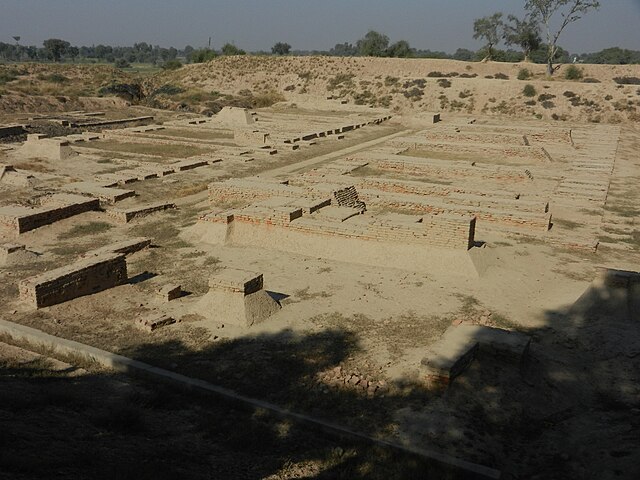Charles Masson (1800–1853) was the pseudonym of James Lewis, a British East India Company soldier, independent explorer and pioneering archaeologist and numismatist. He was the first European to discover the ruins of Harappa near Sahiwal in Punjab, now in Pakistan. He found the ancient city of Alexandria in the Caucasus dating to Alexander the Great. He unlocked the now-extinct script known as Kharoshthi.
The Stupa Nb.2 at Bimaran, where the Bimaran reliquary was excavated. Drawing by Charles Masson.
A plate of Masson's Bactrian coins, published in the Journal of the Asiatic Society of Bengal, 1836.
Stupas and caves in Hadda, by Charles Masson, 1842
Harappa is an archaeological site in Pakistan, about 25 km (16 mi) north of Sahiwal. The Bronze Age Harappan civilisation, now more often called the Indus Valley Civilisation, is named after the site, which takes its name from a modern village near the former course of the Ravi River, which now runs 8 km (5.0 mi) to the north. The core of the Harappan civilisation extended over a large area, from Gujarat in the south, across Sindh and Rajasthan and extending into Punjab and Haryana. Numerous sites have been found outside the core area, including some as far east as Uttar Pradesh and as far west as Sutkagen-dor on the Makran coast of Balochistan, not far from Iran.
A view of Harappa's Granary and Great Hall
Miniature Votive Images or Toy Models from Harappa, ca. 2500. Hand-modeled terra-cotta figurines with polychromy.
Harappa. Fragment of Large Deep Vessel, circa 2500 B.C. Red pottery with red and black slip-painted decoration, 4 15/16 × 6 1/8 in. (12.5 × 15.5 cm). Brooklyn Museum.
Image: Harappa red jasper male torso







